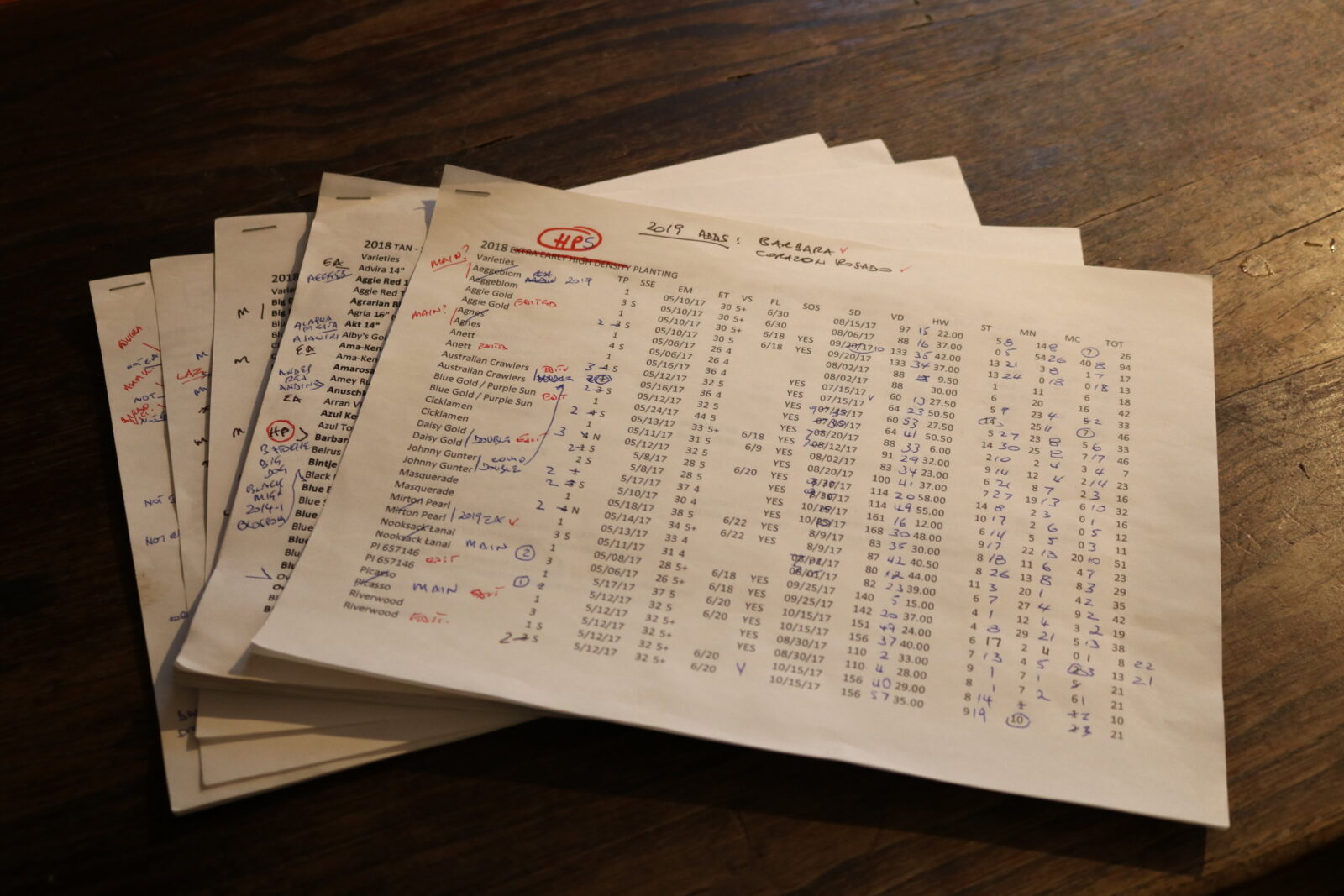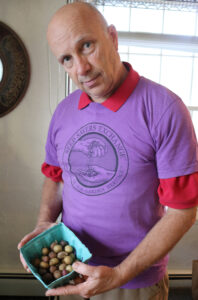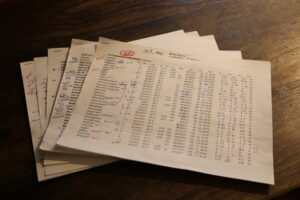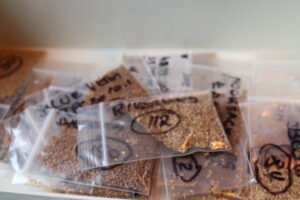Keep Exploring
When you make a purchase from Seed Savers Exchange, you help fulfill our nonprofit mission to protect our food and garden heritage. Do even more good by making a donation to help us preserve and share even more heirloom varieties!


It doesn’t matter that the wet, heavy snow is coming down in force. Or that it’s freezing cold outside. Or that there’s a copper skillet of heirloom onions and potatoes (‘Skagit Valley Gold’) sizzling on the stovetop in the kitchen. No, none of that deters the ebullient, 60-something man from bursting out the front door of his modest home on a quiet side street in Kenosha, slogging down the snow-covered driveway, and inquiring, with genuine concern and an unmistakable accent, “How was your drive?”
Meet Seed Savers Exchange member Curzio Caravati, self-described “horticultural researcher,” caretaker of rare potato varieties, and founder of the Kenosha Potato Project (KPP)—an initiative to augment the work of Seed Savers Exchange, the U.S. Potato Genebank, and others to safeguard the genetic diversity of the potato, one of the most important crops in the world.
We at Heritage Farm—Seed Savers Exchange’s headquarters in Decorah, Iowa—also endearingly call him “Johnny Potato Seed” and “The Potato Crusader,” in tribute to the undying enthusiasm he has for saving and sharing rare potato varieties.
“Growing, saving, and collecting data on rare potato varieties helps protect against diseases that could wipe out potatoes worldwide,” says Curzio, noting that the KPP, formed in 2004, today has 4,900 supporters in over 100 countries who exchange tips via Facebook on how to best grow and preserve rare potato varieties.
“Our work is a safety net against diseases that may have a catastrophic impact on potato growth and productivity in the future.”
Curzio credits author and activist Michael Pollan—and specifically his 2002 book The Botany of Desire—with sparking his passion for stewarding the crop.
“My goal is to inspire legions of future potato breeders just like Michael Pollan inspired me,” says Curzio, a vocal, loyal, and, yes, very enthusiastic Seed Savers Exchange member and Exchange lister. In 2025 he listed 176 true potato seed varieties, 2 potato varieties, 2 garlic varieties, 2 tomato varieties, and 1 pepper in the organization’s Yearbook: “I use all the space I can,” he says with a somewhat impish smile, “just like I do with my garden here in Kenosha.”
Raised in Switzerland, Curzio has made his home for decades in Kenosha, where he also co-founded the vibrant Kenosha HarborMarket that attracts over 200 vendors each Saturday in the spring and summer (when it operates just off the shores of Lake Michigan) and fewer in the winter months, when it moves indoors. Curzio made a name for himself selling heirloom garlic at the market, a crop he began to cultivate soon after settling in Kenosha.
Despite knowing little about gardening, Curzio was a quick study, and before long he was also harvesting crops of apples, chestnuts, tomatoes, and, of course, potatoes on the three acres of land surrounding his home. (He also added beekeeping, through the Swiss Bee Chalet, to his résumé.) “I have a vast knowledge of scientific farming practices from educating myself,” he says, “and I use those practices in growing my crops.”
Indeed, Curzio doesn’t profess to be a farmer or a scientist, but he nonetheless has plenty of solid advice to offer potato lovers as “the biggest unpaid potato promoter in America,” the (very apt) phrase he used to describe himself to Potato Grower in 2018.
And good potato-growing practice, he says, begins with great soil. Each year Curzio orders a full semi-load of organic Purple Cow compost, most of which he uses to fill the (approximately) 400 fabric potato grow bags that line his backyard in long, colorful (bright periwinkle and poppy-red) rows from spring through fall. The bags’ fabric air-prunes roots for stronger, healthier plants and eliminates the problem of pooling water, which can make roots rot.

“[Years ago], I was growing potatoes in the ground, and I didn’t know how to keep the varieties separate so I started using bags,” he says. “A big part of my research is to find varieties that will yield more vertically than horizontally and to prove you don’t need to own a lot of land to grow potatoes—that you can successfully grow many varieties in urban areas.”
Comparing data from year to year, Curzio identifies high-producing potato varieties, a critical part of maintaining (and narrowing) his collection of more than 400 potato varieties. (“You can’t call yourself a collector unless you develop the skill of selecting,” he says. “The goal should always be to improve the collection, not just grow everything.”)
And what exactly does he do with the pounds and pounds of potatoes he yields each year? He consumes the ones that are smaller than a chestnut—the “micros,” in Curzio’s parlance—and donates many of the ones that are larger than two ounces to local food banks. It’s the “minis” that he plants in grow bags in his backyard, or shares with other potato lovers via Seed Savers Exchange. And as if that weren’t enough, Curzio also produces and shares true potato seed, harvested from fruit produced by potatoes under the right growing conditions.

Those seeds, he explains, are essentially a virus-free package for storing the mother plant’s genetics long-term (up to 70 years, he says). He dishes up (and rates, of course) a different potato variety at breakfast every day. “I live, eat, and breathe potatoes,” Curzio proudly proclaims. “And I must be on to something because I haven’t had a sick day in more than 40 years.”
He also sees the work of Seed Savers Exchange as critical today more than ever.
“At a time when biodiversity is continuing to decline rapidly and, keeping seeds growing is the best way to keep them vital and regenerating, we need Seed Savers Exchange doing this vital work,” he says. “Please join me in becoming a member and showing your support for the Seed Savers Exchange mission that will help ensure that seeds are here for us now and for generations to come.”
Originally published May 19, 2019. Updated January 31, 2025.
Keep Exploring
When you make a purchase from Seed Savers Exchange, you help fulfill our nonprofit mission to protect our food and garden heritage. Do even more good by making a donation to help us preserve and share even more heirloom varieties!